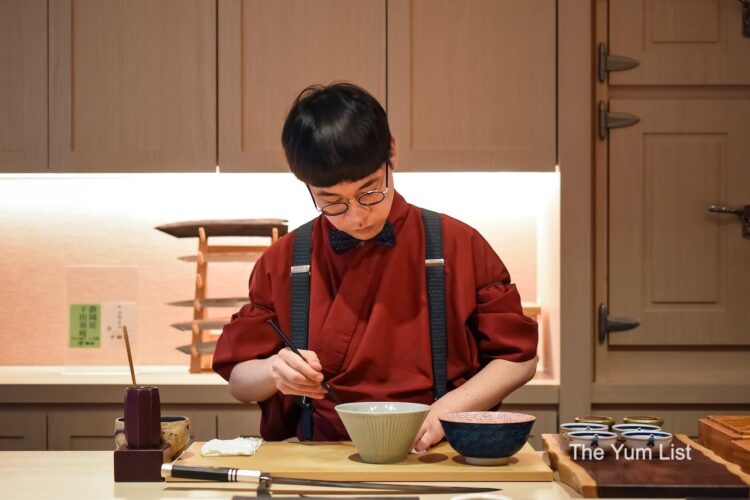Sushi Masa by Ishibashi – Japanese Omakase Restaurant KL
Words: Khor Hui Min
Photos: Han Sen Hau
Sushi Masa by Ishibashi is an extension of the renowned Michelin-starred Edomae-style sushi restaurant pioneered by Chef Masakazu Ishibashi, initially established in the exclusive Ginza district of Tokyo. As lovers of Japanese food and culture, we were delighted to experience this approach in KL, which originated over 200 years ago in former Edo (the current Tokyo).
As is custom with restaurants of this calibre, the freshest and highest-quality ingredients are imported directly from Japan. We took a seat at the counter and marvelled at Chef Hisaki’ Yossy’ Yoshinaga as he crafted our meal with passion, dedication, and precision. His mastery of sushi making makes it look effortless, yet the result is artistic and oh-so-delicious.
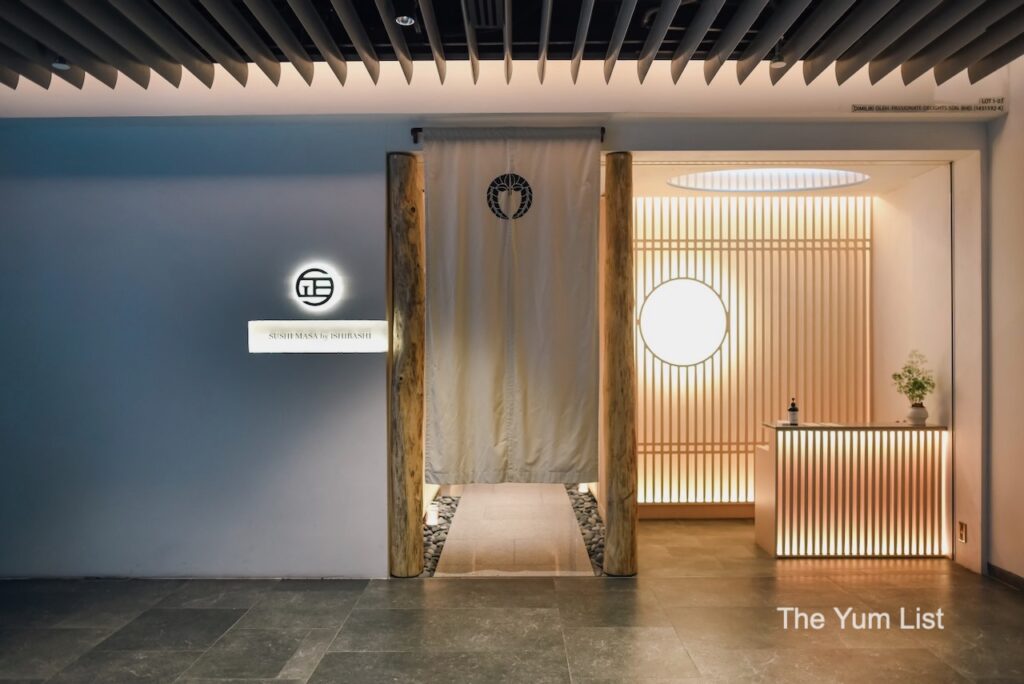

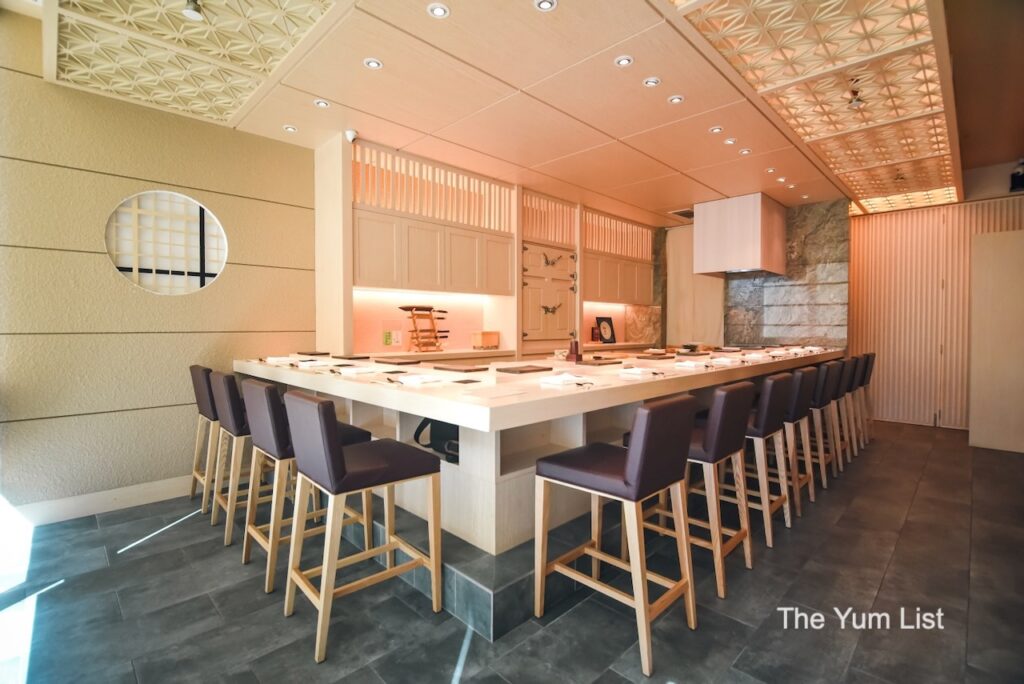
Sushi Masa by Ishibashi KL Menu
Sushi Masa by Ishibashi offers three menus: Kou (RM 488) for lunch, and Miyabi (RM 988) and Omakase (RM 1288) for lunch and dinner. We were fortunate to see the full range of what the restaurant offers with the prestigious Omakase menu. The thirteen-course line-up was enough to fill our tummies and satisfy our curiosity. However, there’s also the option of a supplementary add-on of Steamed Awabi with Karasumi and Liver Sauce for RM 268 ++.
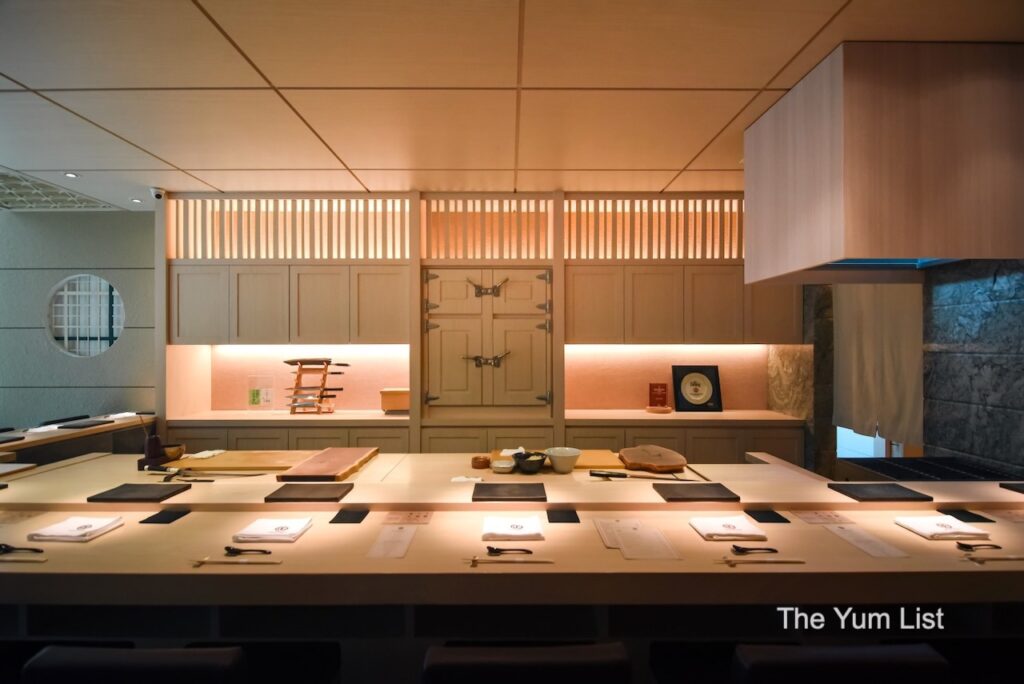
Omakase Menu
Monkfish Liver Monaka
The first course was Monkfish Liver Monaka. Monkfish liver is a gourmet dish that is also called the foie gras of the sea, and its flavour has been compared to the French delicacy. This seafood is a good source of omega 3 and vitamins A, D, and E. Traditionally, monaka is a type of wagashi, a Japanese confection traditionally served with tea. Monaka usually comes in the form of a sweet sandwich ‘cookie’. However, Chef Yossy cleverly turned it into a delicious savoury dish, with the rich and creamy minced monkfish liver and persimmon sandwiched between the two light rice cake wafers.
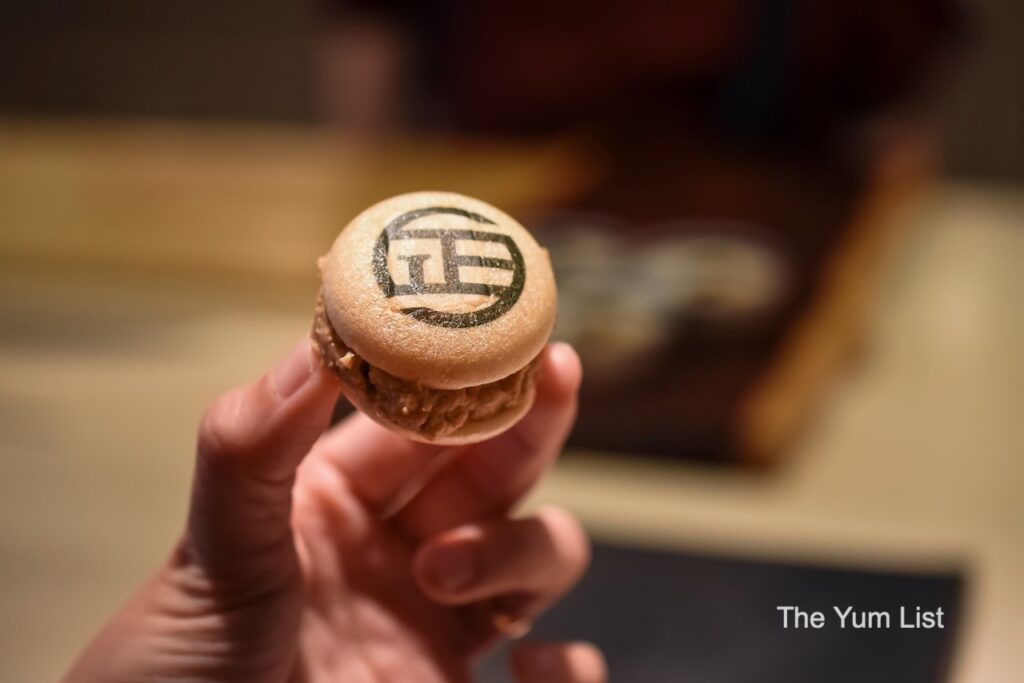
Botan Ebi with Egg Yolk Sauce and Caviar
Botan Ebi, translated as ‘jumbo sweet shrimp’ in Japanese, is renowned for its large size and delightful sweetness. In this dish, the rich, creamy egg yolk sauce complements the fresh, juicy shrimp, and the medley of flavours is accentuated by the caviar.

Kani Croquette
The warm croquette was filled with crab, coated in a batter and fried to golden crispy perfection, which contrasted nicely with the hot creamy crab filling. The croquette came with kombu salt and freshly grated wasabi, each lending the dish a different character. Each serving of wasabi was grated on sharkskin in front of us, freshly prepared for every fish. Authentic wasabi is mellow and pleasant, a far cry from the imitation version made with European horseradish that is commonly available in the mass market.
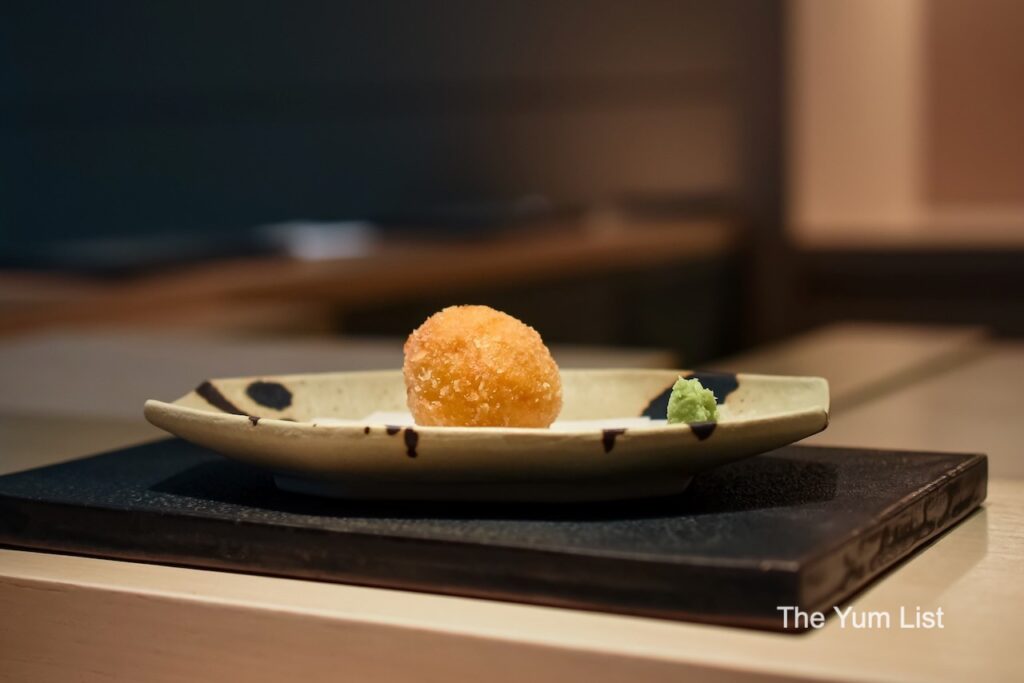
Three Kinds of Premium Sushi
The next course consisted of three types of premium sushi, and it was a gentle introduction to the trio of sushi courses in the omakase.
Shiro ebi with uni consisted of baby white shrimp (shiro ebi) with sea urchin roe (uni) wrapped in a small square of lightly toasted seaweed. The creamy texture and delicate flavour of uni paired well with the succulent shrimp meat.
The second piece, chutoro translates to ‘medium fatty tuna’. It is usually found near the skin on the back and belly of the tuna. Its distinctive qualities include a moderate level of oiliness and juiciness while also offering a substantial meatiness when consumed. The flavour profile resembles that of akami, albeit with a subtle hint of sweetness.

The last roll was crowned by the saba (mackerel). Beneath the fish were a blend of finely chopped ohba leaf (shiso leaf or Japanese perilla), kanpyo (dried shavings of a variety of calabash gourd – a signature ingredient in traditional Edo-style Japanese cuisine), miyoga (Japanese ginger), and minegi (tiny green onions grown for sushi). Finally, it’s elegantly topped with a thin, transparent film of kombu seaweed. When you bite into the roll, you can immediately taste the fish, then the sweet and sour taste of the minced vegetable – satisfying and refreshing.

Kobako-Gani Risotto
The Kobako-Gani Risotto consisted of hairy crab risotto topped with creamy uni. Kobako means ‘flavour box’ in Japanese and is used to describe the female crabs, alluding to the richness of the meat and roe.

Chef’s Choice of the Day
Guests can choose between Fugu Shirako (pufferfish’s sperm) and Toro Sukiyaki with Kinkori Egg for the Chef’s Choice of the Day.
Han Sen (photographer) and Kennix (reelographer) jumped at the chance to taste fugu (pufferfish), a prized delicacy in Japan. It contains lethal doses of tetrodotoxin in its liver, ovaries, eyes and skin, so chefs have to undergo years of training to prepare this fish. The white testis sac of the male pufferfish is a rare delicacy, often prepared by cooking it over black Japanese charcoal. The shirako was served on sushi rice on a beautiful golden flower-shaped plate. The white milky liquid from the sac had a mild and savoury profile with a hint of sweetness.
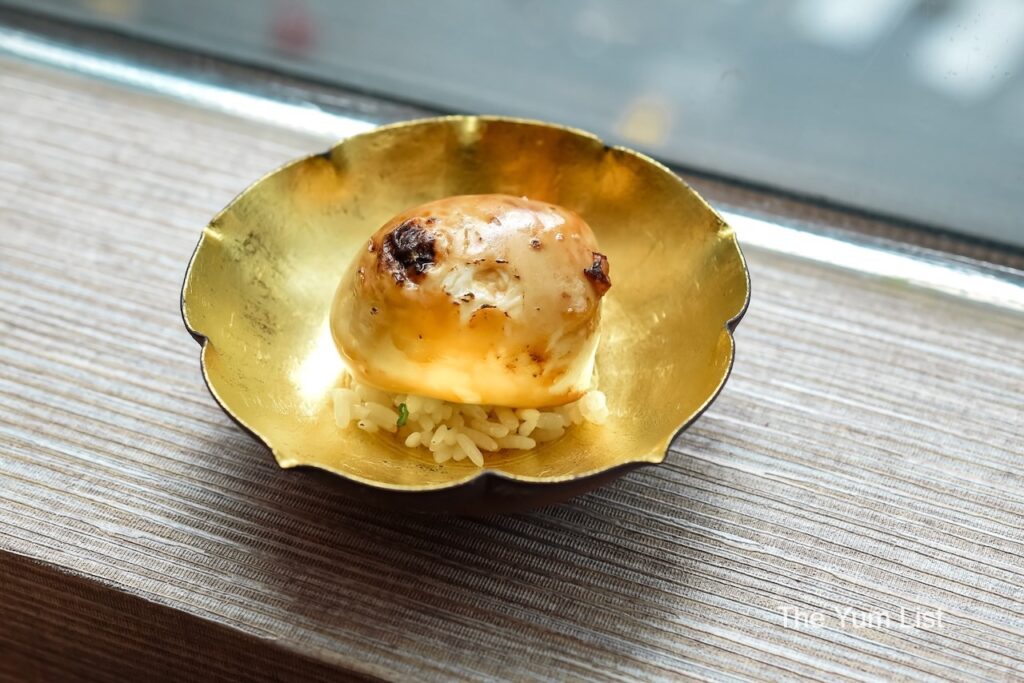
The second choice, tuna belly (toro), was lightly grilled and served warm with a raw egg yolk. The combination of rich, creamy egg yolk and light citrusy sauce was a great dip, enhancing the delicate tuna belly. It was so good that once the fish was finished, the chef generously added some sushi rice to soak up the rest of the sauce.
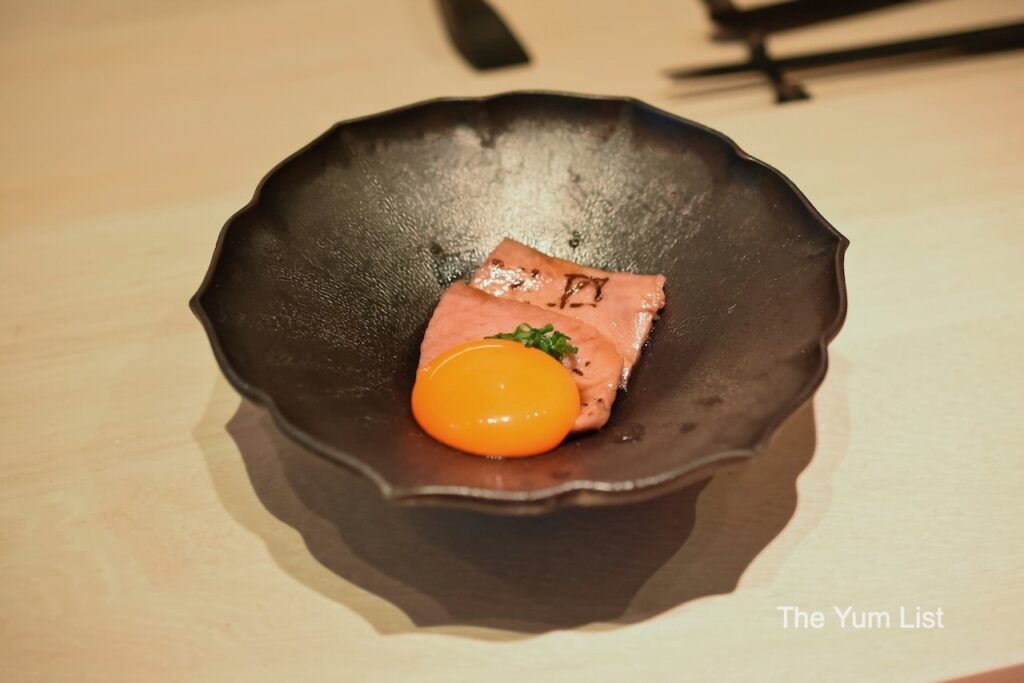
Three Kinds of Premium Sushi
Round two of premium sushi consisted of Nodoguro, Akami and Otoro.
Nodoguro, or blackthroat seaperch, spans the eastern Indian and western Pacific oceans, ranging from Japan to Australia. The lightly grilled fillet with sushi rice was wrapped in a small square of lightly toasted seaweed sheet. We could taste the freshness and sweetness of the fish. Akami, lean tuna marinated with soy sauce, was a beautiful deep red hue. Unlike chutoro and otoro, akami is very low in fat but full of flavour. In contrast, otoro is considered the most desirable of tuna cuts. It has the highest level of fat content from the tuna belly, resulting in a melt-in-your-mouth experience. It was fun to try these side by side.


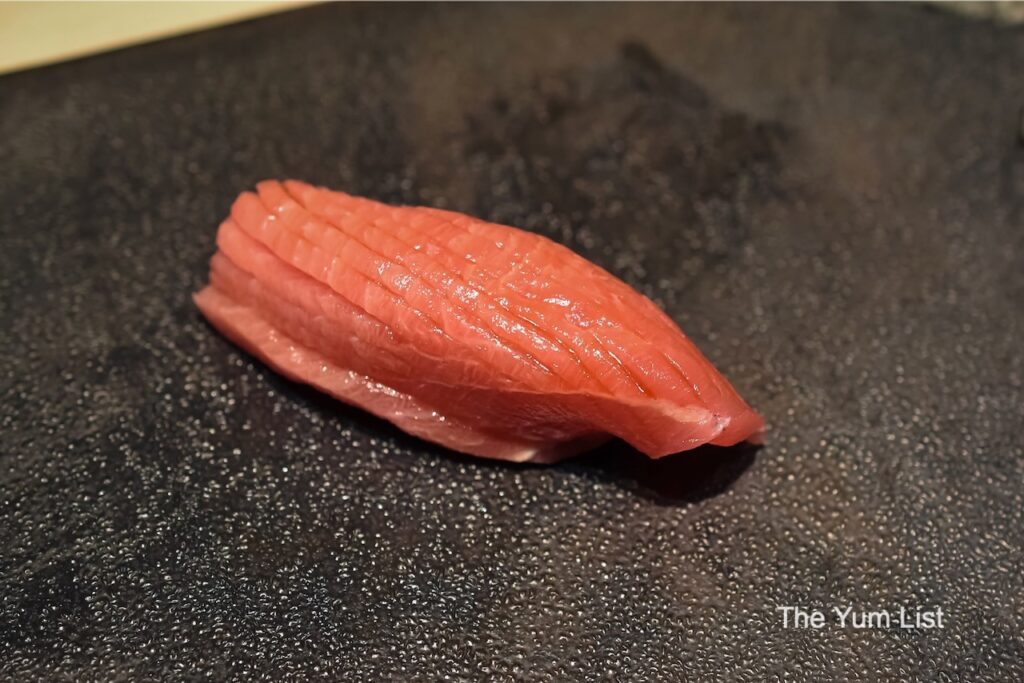
Whitefish Shabu Shabu
This dish features steamed Shiro Amadai, a type of whitefish, served in a flavourful clear broth. A pretty light blue ceramic bowl was a surprising contrast to the subdued tones of the crockery of the previous dishes. It was a nice warm reset after a series of sushi.

Two Kinds of Premium Sushi
Our last round of premium sushi featured Shimaji and the crowd-pleasing Bafun Uni. Shimaji (striped jack) offers a profile reminiscent of a blend between saba (mackerel) and kanpachi (greater amberjack), akin to a leaner version of yellowtail. Its texture is delicate and buttery, with tender flesh and a little fat. When fresh, it has a firm texture and finishes with sweet undertones. Esteemed sushi connoisseurs often regard it as one of their preferred choices. Bafun uni, originating from smaller sea urchins found in deeper ocean waters, is characterised by its compact size. It is bold, rich in umami, and mouth-wateringly creamy.
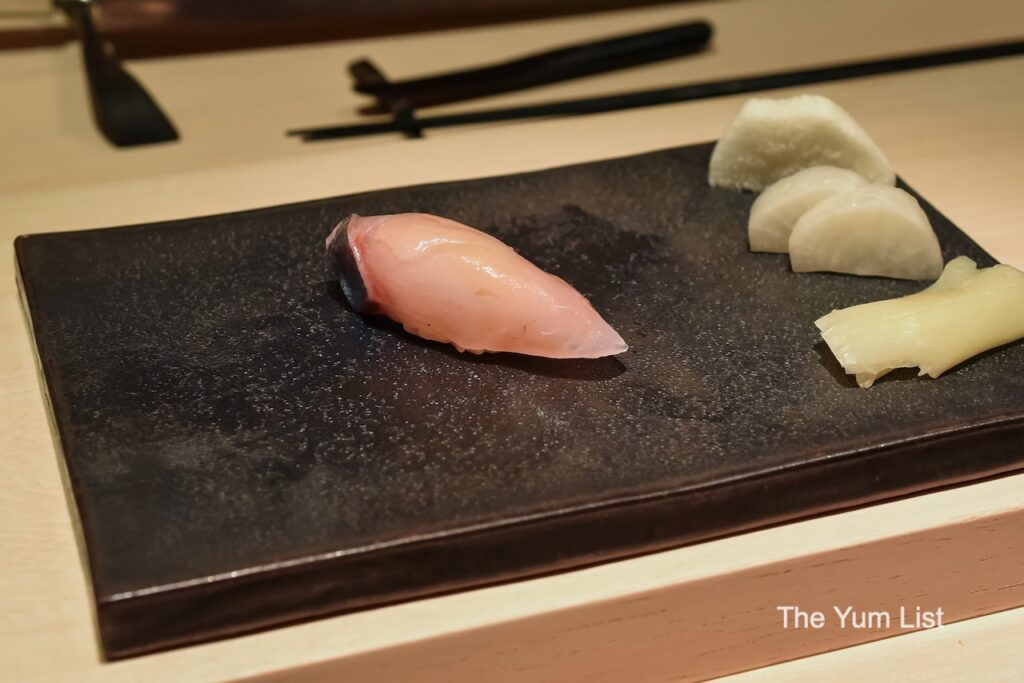

Torotaku Handroll
Toro refers to ‘tuna’, and taku refers to ‘pickled radish’. Both of these key ingredients are chopped finely and served in a mouthwatering roll.
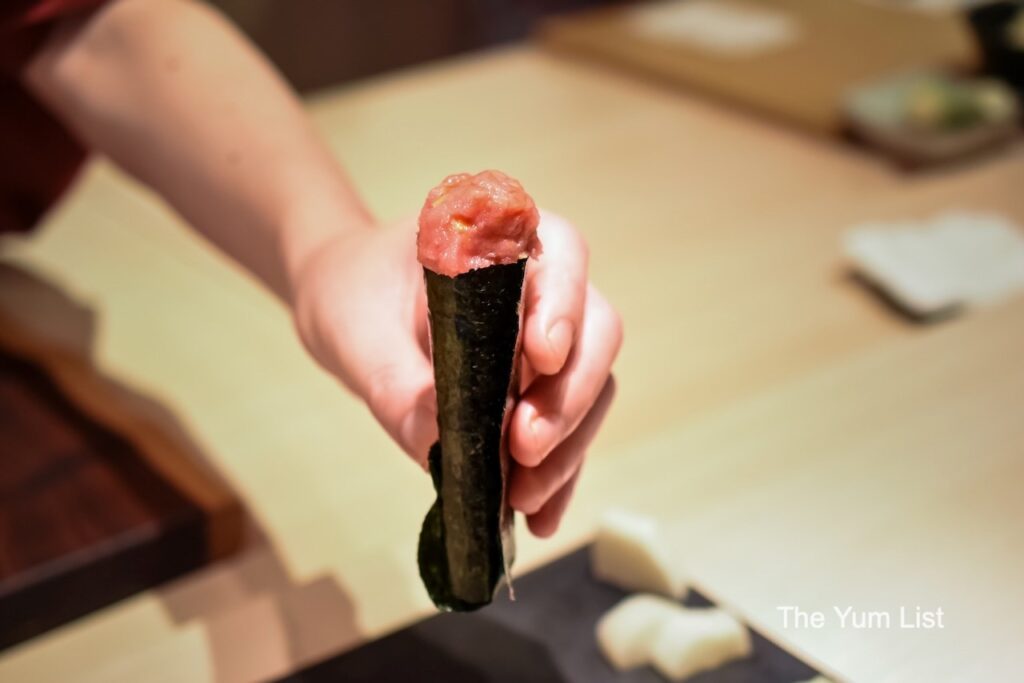
Two Types of Tamago
Japanese omelette, Tamago, is made by rolling thin layers of fried egg together. Chef Yossy took it to a new level by presenting us with two types. The first was cooked at 170C for one hour, while the other was cooked at 120C for two hours. The difference in cooking temperature and cooking time yielded distinct textures. One was soft and fluffy, almost like a savoury sponge cake, while the other was more dense, akin to a thick pancake.
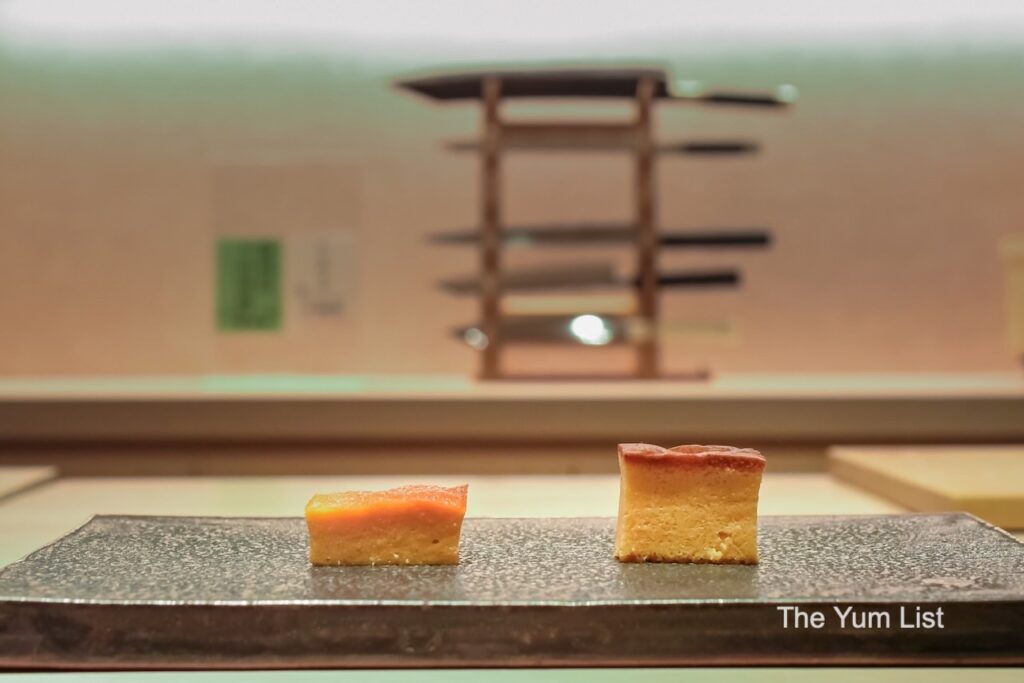
Miso Soup
The warm miso soup was a welcome savoury segue to dessert.

Dessert
The simplicity of the sweet and juicy Japanese strawberries and musk melon was a consummate finish to an exceptional meal.

Sushi Masa by Ishibashi KL Review
The attention and service provided by Chef Yossy and his team were impeccable and highly professional, with great attention to detail. A special thanks to Michelle Teoh, the manager, who attended patiently and politely to our every request.
Reasons to visit Sushi Masa by Ishibashi: An exceptional omakase experience, superb attention to detail, and an intimate and stylish space.
Sushi Masa by Ishibashi
Lot 1-03, First Floor, Menara Hap Seng 3
Jalan P. Ramlee, 50250 Kuala Lumpur, Malaysia
+601114669374
@sushimasa.kl
Sushi Masa by Ishibashi Opening Hours
Tuesday: 6–10:30 pm
Wednesday: 12–2:30 pm, 6–10:30 pm
Thursday: 12–2:30 pm, 6–10:30 pm
Friday: 6–10:30 pm
Saturday: 12–2:30 pm, 6–10:30 pm
Sunday: 12–2:30 pm, 6–10:30 pm
Monday Closed
Find more Japanese restaurants in KL here and stay up-to-date with the latest gourmet and travel recommendations for Malaysia here and here.

